If you want to know about the types of foundation or types of footing or concrete mix design, please click the link.
Isolated footings are a common type of foundation used to support individual columns or piers in a building or other structure.
1) Isolated footing
- For ordinary structures located on reasonably firm soil, it usually suffices to provide a separate footing for every
- Such a footing is called an isolated footing.
- It is generally square or rectangular in plan; other shapes are resorted to under special circumstances.
- The footing basically comprises a thick slab which may be flat (of uniform thickness), stepped or sloped (on the upper surface).
2) Isolated footing ( Conti…)

- The soil bearing pressures from below tend to make the base slab of the footing bend upwards, somewhat into a saucer-like shape (cantilever action), and hence the footing needs to be suitably reinforced by a mesh provided at the bottom of the slab.

3) Distribution of base pressure
- The distribution of the soil reaction acting at the base of the footing depends on the rigidity of the footing as well as the properties of the soil.
- The distribution of soil pressure is generally non- uniform.
- However, for convenience, a linear distribution of soil pressure is assumed in normal design practice.
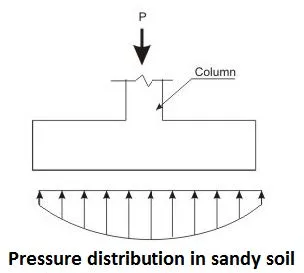
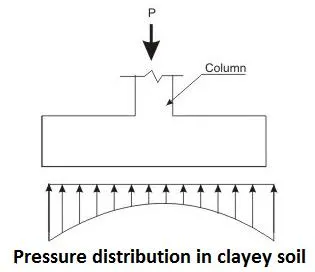

4) General design considerations
The following are some important design considerations for isolated footings:
- Load-bearing capacity: The footing must be designed to support the load of the structure and any potential vertical or lateral loads. The load-bearing capacity of the soil must be considered, as well as the weight of the footing and the column it supports.
- Soil type: The type and characteristics of the soil on which the footing will be constructed are important considerations. The soil’s bearing capacity, settlement characteristics, and potential for heaving or shrinkage must be taken into account when designing the footing.
- Footing size and shape: The size and shape of the footing should be designed to distribute the load evenly over the soil and prevent excessive settlement or differential settlement. The shape of the footing should be chosen based on the geometry of the column it supports.
- Depth: The depth of the footing must be sufficient to reach stable soil that can support the load. The depth can be affected by the type of soil, the size and weight of the structure, and any potential lateral loads.
- Reinforcement: Reinforcement may be required in the footing to provide additional strength and prevent cracking or failure. The amount and type of reinforcement will depend on the size and weight of the structure, as well as the characteristics of the soil.
- Water table: The depth of the water table can affect the design of the footing, particularly in areas with high groundwater levels. In these cases, special provisions may be necessary to prevent the footing from being undermined or washed away.
- Accessibility: The location and accessibility of the footing must be considered during the design phase. The footing should be designed to allow for easy construction, inspection, and maintenance.
5) General design considerations and IS code requirements
i) Minimum nominal cover (cl. 26.4.2.2 of IS 456)
- The minimum nominal cover for the footings should be more than that of other structural elements of the superstructure as the footings are in direct contact with the soil.
- Clause 26.4.2.2 of IS 456 prescribes a minimum cover of 50 mm for footings.
ii) Thickness at the edge of footings (cl. 34.1.2 and 34.1.3 of IS 456)
- The minimum thickness at the edge of reinforced and plain concrete footings shall be at least 150 mm for footings on soils and at least 300 mm above the top of piles for footings on piles, as per the stipulation in cl.34.1.2 of IS 456.
iii) Bending moments (cl. 34.2 of IS 456)
- It may be necessary to compute the bending moment at several sections of the footing depending on the type of footing, nature of loads and the distribution of pressure at the base of the footing.
- The critical section of maximum bending moment for the purpose of designing an isolated concrete footing which supports a column, pedestal or wall shall be:
- At the face of the column, pedestal or wall for footing supporting a concrete column, pedestal or reinforced concrete wall.
Bending in foundation
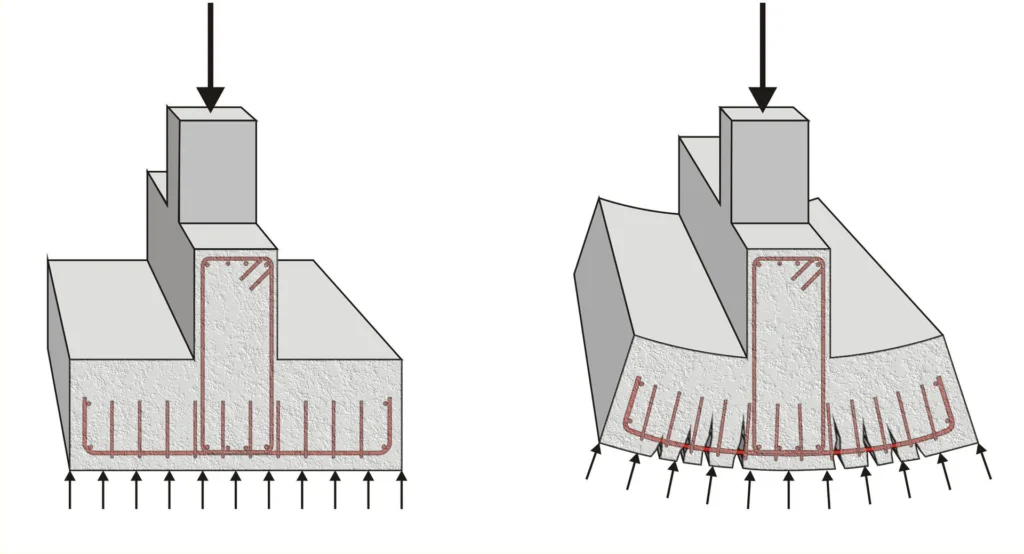
Design consideration
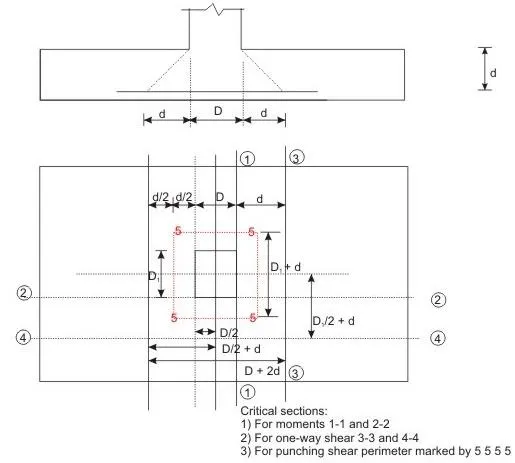
- Halfway between the centre-line and the edge of the wall, for footing under masonry wall. This is stipulated in cl.34.2.3.2 of IS 456.
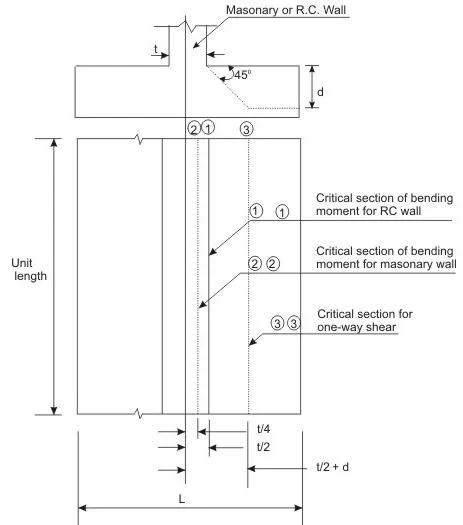
iii) Shear force (cl. 31.6 and 34.2.4 of IS 456)
- Footing slabs shall be checked in one-way or two-way shears depending on the nature of bending.
One-way shear (cl. 34.2.4 of IS 456)
One-way shear has to be checked across the full width of the base slab on a vertical section located from the face of the column, pedestal or wall at a distance equal to:
- Effective depth of the footing slab in case of footing slab on soil, and
- Half the effective depth of the footing slab if the footing slab is on piles
Note: The design shear strength of concrete without shear reinforcement is given in Table 19 of cl.40.2 of IS 456.
One way shear in foundation
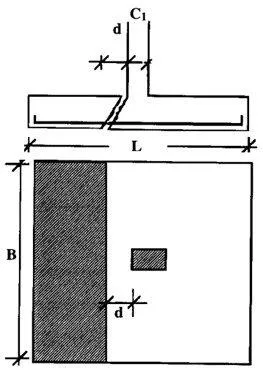
Two way shear in foundation
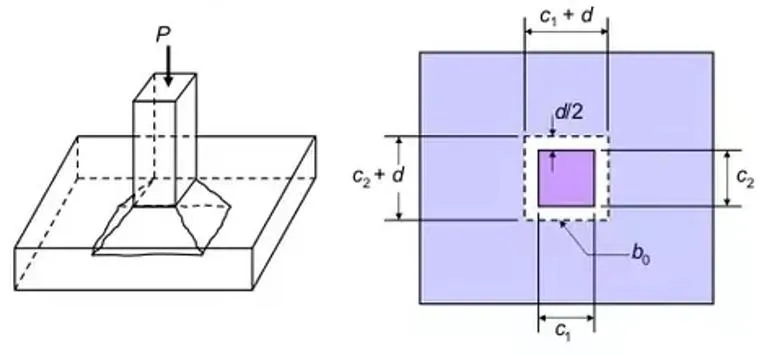
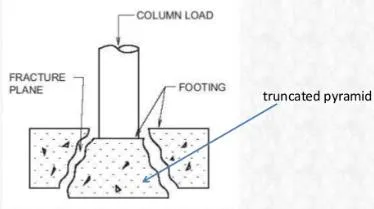

Design consideration

Two-way or punching shear (cls.31.6 and 34.2.4)
- Two-way or punching shear shall be checked around the column on a perimeter half the effective depth of the footing slab away from the face of the column or pedestal.
iv) Tensile reinforcement (cl.34.3 of IS 456)
- The distribution of the total tensile reinforcement, calculated in accordance with the moment at critical sections, as specified in part (iii) Bending moments (cl. 34.2 of IS 456) of the section.
Overall, the design of isolated footings must take into account the specific characteristics of the structure and the soil on which it will be constructed. Proper design can help ensure the safety and stability of the structure over time.